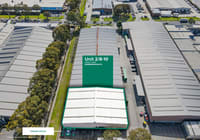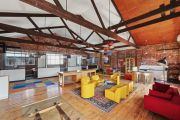
Why the right location is often central to a nightclub's success
With the triple threats of COVID-19, liquor licensing restrictions and increasing competition from boutique bars and restaurants, can our nightclub districts continue to thrive? The answer may lie in real estate.
The ever-changing tastes of fickle clubbers chasing the next big thing after dark means nightclubs must keep evolving and work hard at securing loyal patronage.
But while many clubs and nightlife trends come and go, some nightclub districts in capital cities around Australia have endured for decades. And, not surprisingly, securing the right real estate has a lot to do with their success.
According to a recent market research report by IBISWorld, there are more than 400 nightclubs in Australia employing almost 5000 staff.
Dr John Sturgeon, course co-ordinator for Real Estate & Development at the University of Queensland Business School said that in Brisbane, nightclub districts have changed over time in line with the city’s development.
In the 1970s and 1980s, clubs in Brisbane’s CBD such as Transformers, Rosie’s and Manhattan, as well as large suburban pubs offering live music, were popular haunts.
This was also the time of a major redevelopment – the completion of the Riverside Centre and Eagle Street Pier along the banks of the Brisbane River, which saw the birth of Friday’s and City Rowers (now Jade Buddha), two clubs that still exist today.
According to Dr Sturgeon, location has everything to do with their success.
“They’ve got pretty much everything going for it – location, views, easy transportation and they are surrounded by high rise buildings full of thirsty young people,” he said.
These days, Fortitude Valley is the nightclub hot spot of Brisbane, but back in the 1980s, before the Fitzgerald inquiry stamped out widespread corruption in the police force, “The Valley” was considered a dangerous place, full of strip clubs, brothels and alternative bars.
“As we moved into the 1990s, we saw the Valley gradually become cleaned up and gentrified,” Dr Sturgeon said.
Now oozing with trendy wine bars, micro-breweries and funky restaurants, as well as plenty of nightclubs, Dr Sturgeon said the Valley had a secure customer catchment, thanks to the number of residents and corporations moving into the area.
“There’s been a migration of city workers to these Valley precincts,” Dr Sturgeon explained. “You’ve got your big firms that now have these standalone buildings in the Valley and employ thousands of workers and now they have somewhere to go after work.”
Another nightclub district that has seen significant gentrification is the inner-Sydney suburb of Potts Point and the Kings Cross area, once famous for its sometimes seedy nightlife.
Samuel Schumann, director of Raine & Horne at Potts Point, said the shift in clientele over the past couple of years has been “astronomical”, with current buyers attracted to the suburb’s proximity to the city, views and foodie attractions.
“I would say nightclubs in the area are almost non-existent now — Kings Cross has taken a bit of a hit since its glory days,” Mr Schumann said.
“The area has become a real hot spot for downsizers who have lived out in the suburbs but now want to be in the thick of things with amazing restaurants and bars. It’s just completely changed the area.”
Justine Baker, the head of the Night Time Industries Association in NSW, said nightclub districts were increasingly becoming replaced by entertainment districts with a broader mix of tenants.
“What Sydney does really well is the diversification of offerings in places like King Street [in the inner-west suburb of Newtown], which is a real mix of food and beverage as well as offices,” she said.
“You’ll see people from all walks of life on King Street because it is a thriving entertainment precinct which caters to a mixed audience.”
Ms Baker said a balance of nightlife, entertainment, retail, office and living spaces created a safer environment for both patrons and employees.
In Adelaide, Hindley Street has historically been a place to play after dark, and Andrew Wallace, president of Adelaide’s West End Association, said this was still true today.
“Since the city’s inception in colonial times, Hindley Street has been an entertainment precinct, and it has remained as an entertainment, precinct, or mixed-use commercial entertainment precinct for its entire life,” Mr Wallace said.
“I think every single South Australian would have a story about Hindley Street.”
However, Mr Wallace said the requirements of the daytime economy had begun to clash with the night time economy, prompting the introduction of state-wide lockout laws, which aim to reduce alcohol-fuelled violence and antisocial behaviour.
“We find people operating cafes and restaurant businesses have really thrived after the introduction of the lockouts,” Mr Wallace said.
“It’s helped a lot of businesses who trade in the morning, and we’ve seen new businesses come into the area,” he said.
In other cities such as Perth, nightclub precincts continue to endure, with Northbridge boasting the highest concentration of nightlife in Western Australia.
But Andrew Jolliffe, managing director of HTL Properties, a specialist in the sale of hotels and leisure properties, said he sold very few nightclubs because of the nature of the asset class.
“Nightclubs tend to be a rip-roaring success or a spectacular failure,” Mr Jolliffe said. “Often, their success will lie with the person who manages it, and that’s why nightclubs aren’t scalable and why we don’t see franchises. It’s hard to sell goodwill.”










